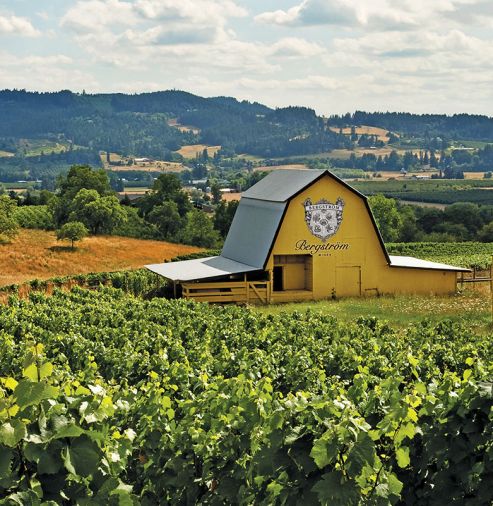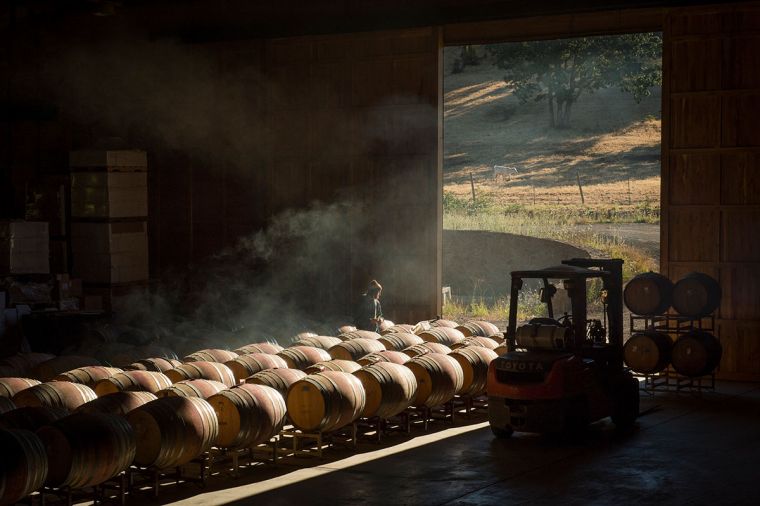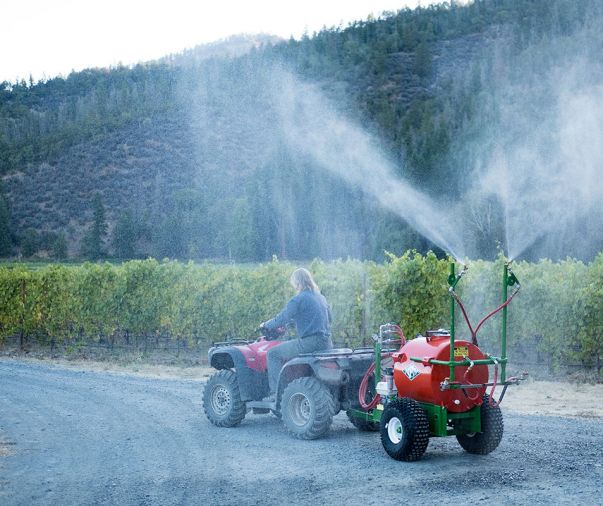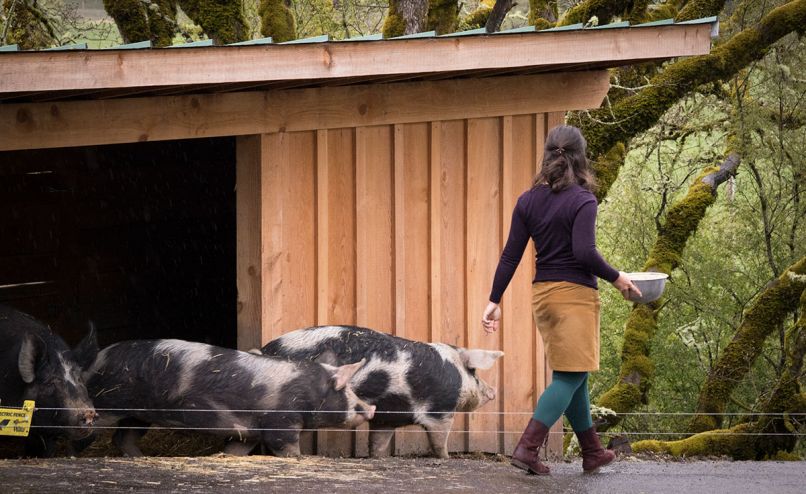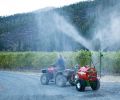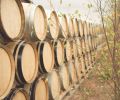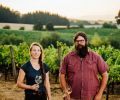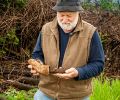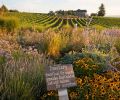For some, wine is a business. For others, it’s a calling. “My dad is probably turning in his grave knowing I sell wine,” laughs Moe Momtazi, founder of biodynamically certified Maysara Winery and Momtazi Vineyard in McMinnville, Oregon. “He thought wine was too sacred to sell. In Zoroastrian culture and religion, wine is a very sacred thing.”
The Zoroastrians aren’t alone in viewing grapes’ transformation into wine as something approaching miraculous. In Catholic culture, wine literally embodies Christ’s blood. Wine holds a central place at the Passover table. And wine vessels have even been unearthed in Chinese tombs thousands of years old.
That reverent view is shared by a growing cadre of biodynamic winemakers who view the act of making, growing, sharing, and enjoying wine as being intimately connected with all things in nature. Biodynamics is a stricter-than-organic agricultural philosophy that puts the focus on sustainability, stewardship, keen attention, and a near-spiritual connection with the land and the life it sustains. It’s is on the rise around the world—including, perhaps unsurprisingly, the Pacific Northwest, long a pioneer in environmental consciousness—and wine is one area where it’s growing fastest.
Today, nearly two dozen vineyards or wineries in the Northwest are certified biodynamic. That includes the nation’s largest biodynamic vineyard, King Estate Winery in Eugene, Oregon, which farms more than 1,000 acres, 465 of which are planted to vine. These self-proclaimed “Kings of Pinot” showed the world that Oregon pinot gris could be great. Also joining the biodynamic ranks are some of the region’s most award-winning wineries, like Pinot Noir pioneer Ponzi Vineyards, cult-favorite Walla Walla producer Cayuse Vineyards helmed by French winemaker Christophe Baron, and the famed Beaux Freres estate in Oregon’s Ribbon Ridge AVA.
But what does it really mean for a vineyard to be biodynamic? Why would wineries do it? And, ultimately, does it really make for better wine?
What is Biodynamics?
Biodynamics is a system of agriculture based on principles described by Dr. Rudolf Steiner, an Austrian philosopher interested in the relationship between science and spirituality. (He also invented Waldorf education – talk about a polymath.)
“One of the core concepts of biodynamics is that it considers a farm as a living entity having its own soul and individuality,” explains Moe. Moe began planting the 200-acre Momtazi Vineyard in 1998, which was initially certified organic. He then transitioned the vineyard to biodynamic a few years later. “That to me is really important. Sometimes when you talk about it with people, they think you’re strange. I tell them, think of it this way. Even if you don’t believe a farm is a living entity, if a farmer thinks that way, he’s going to treat it with respect, with care.”
Much like organics, biodynamic views soil fertility and health as paramount. It forbids the use of synthetic chemical sprays and treatments in favor of compost and manure, ideally generated within the farm itself. “The biodynamic farmer aspires to create a closed loop system,” explains Bill Steele, co-founder of biodynamically certified Cowhorn Vineyard & Garden in Oregon’s Applegate Valley AVA. “We’re challenged to minimize the inputs we bring in.” That means biodiversity—including crops as well as native biodiversity—is championed. “You won’t find a monocrop biodynamic farm anywhere in the world,” says Bill. In addition to 25 acres of Rhône-style grapes on the 117-acre property, Cowhorn also grows asparagus, lavender, and a hazelnut and truffle orchard.
Biodynamics also includes some practices with a more mystical bent. Planting, pruning, harvest, and other actions are often synchronized to advantageous lunar phases. Herbs and medicinal plants are used to treat crops. Special fertilizers called preparations are applied to compost and crops, the most famous of which is made by burying manure from a lactating cow in a hollow cow horn during the fall, then digging it up and using the contents to make a tincture in the spring.
“We actually grow the materials for all of our own biodynamic preparations onsite, with the exception of the cows and manure,” says Janie Brooks Heuck, managing director at Brooks Winery in the Eola-Amity Hills AVA in Oregon’s Willamette Valley. Brooks’ winery and estate vineyard are certified biodynamic. She says many of those plants, like yarrow and chamomile, serve double-duty as insectaries, attracting beneficial insects to the vineyard that help manage pests.
While those ideas might sound strange to the modern ear, in many ways, they represent a return to ideas about agriculture that persisted for the vast majority of human history. Moe was born and raised in Tehran, Iran. When he was first learning about biodynamics in the late 1990s, he says many of the practices reminded him of his grandparents, who farmed tea and rice on the Caspian Sea. “I realized it was just like my grandmother and great grandmother,” says Moe. “When we would get sick, they would treat us with plants by making tea with them and exposing the tea to the night skies to empower it.”
Western agriculture also has a rich tradition of looking to the skies to make decisions about what happens on the ground. “I was talking to my former vineyard manager when we were just starting, and I said all the stuff about composting and returning everything to the soil makes sense, but I’m not sure about these cosmic forces,” says Paul Beveridge, founder of biodynamically certified Wilridge Vineyard, Winery & Distillery in Yakima, Washington. “And he said ‘Oh, no, that’s the part that makes sense. That’s the Farmers’ Almanac. We’ve been doing that forever!’”
Why Grow Biodynamically?
With such strict standards, why are so many winemakers opting for biodynamics?
At Brooks Winery, biodynamics was part of the program from day one. Founder Jimi Brooks had been introduced to the practice working harvest in France in the 1990s, and brought it with him to winemaking roles at WillaKenzie Estate and Maysara Winery before starting his own vineyard in 2002 utilizing biodynamic practices. Jimi passed away in 2004, but his sister Janie carried on his commitment to biodynamic winegrowing and winemaking, eventually certifying the estate vineyard and winery in 2012.
Janie says biodynamics have a clear positive impact on fruit quality at Brooks, recalling the 2003 harvest when Brooks’ estate vineyard included five acres of Riesling. Four of those acres were being farmed biodynamically by her brother, while the other acre was under conventional cultivation by a different winemaker. “They ended up picking their fruit on the same day,” says Janie. “And our fruit was one degree brix riper, and we had one more ton to the acre. The other vineyard owner looked to my brother and said, ‘Can you do that thing you’re doing over here, on my 16 acres?’”
More recently, Janie was grappling with a deer problem in Brooks’ estate vineyard. She noticed that the deer seemed to favor her vines over those of her neighbors. A quick tendril tasting revealed why: Brooks’ biodynamically grown vines had much sweeter vegetation, making them particularly tasty to peckish grazers. And it’s not just ruminants who find Brooks’ biodynamically grown crops enticing. “I think you can taste the difference in our wines,” says Janie. “It’s purity of fruit, it’s flavor, and it’s freshness.”
For Paul, the decision was made for a similar reason. “I actually decided to be biodynamic from a quality standpoint,” says Paul. “The wines I liked best in the world were coming from biodynamic vineyards.”
Paul occasionally lectures on biodynamics to other winemakers. He says one of his favorite slides from his presentation is a list of other biodynamic wineries around the world, including producers like Zind-Humbrecht, Domaine Leroy, and Chapoutier. “I mean, who wouldn’t want to be on this list?” says Paul. “You just can’t argue with the results.”
Paul planted Wilridge Vineyard in the Naches Heights AVA in 2007, following biodynamic practices from the beginning. He says Eastern Washington’s famously fertile soils, low humidity, and dry growing seasons have made it easy. His vines have been remarkably healthy, with virtually no disease and a string of outstanding vintages. The only challenge he reports is managing weeds without conventional herbicide. “I could spend $250 on Roundup and I could be done for the year,” says Paul. “Instead, I’m sending a crew out every week at a cost of $600 to $800.”
Does Paul have a theory about why so biodynamic wines are so good? “Biodynamics is a very careful observation of your farm,” says Paul. “That’s why it’s such a good shorthand for quality wine, because you know that folks care. They’re doing the most intensive thing they could do, and they’re doing it because they get good results and because they love the planet.”
When Moe started growing biodynamically at Momtazi, he says his winemaker used to plead with him not to talk about it because it turned consumers off. “It’s now become something really chic, but when we first started, it was really considered almost voodoo and witchcraft,” says Moe. He echoes Paul’s feeling that the attentiveness demanded by biodynamics is the key. “The hardest thing about biodynamics is not practicing it—that’s easy,” says Moe. “It’s learning. Learning the connection to nature and how things work and being able to observe nature and go beyond the surface. That is so important.” That cultivated focus appears to be working. Pinot noir from the Momtazi Vineyard is some of the most sought-after fruit in Oregon, famous for its incredible intensity and ability to age beautifully for many years.
For Cowhorn Vineyard, Bill said he and his wife and business partner, Barb, were attracted by both the philosophy and the warmth of the people. “Biodynamics was kind of an extension of the way Barb and I were living,” explains Bill. After Barb went to a biodynamic farmers’ meeting in Sonoma, California, and immediately clicked with the other attendees, they decided to pursue certification. “When we started, Doug Tunnell who owns Brick House said ‘Come on up and I’ll show you what I do, and why,’” says Bill. “They took the time to share.”
At Cowhorn, wine quality is still the primary driver, clearly evidenced in the crystalline, savory purity of Viogner/Marsanne/Rousanne blend Spiral 36 and the brand’s resonant, blue fruit-inflected syrahs. Yet Bill says their biodynamic practices have come with some unexpectedly enjoyable side effects beyond exceptional fruit quality. “We actually consider ourselves fine wine growers who just happen to be farming biodynamically,” says Bill. “But I think what I like most about biodynamics is how alive it allows the farm to be. We have bald eagles, golden eagles, owls, migratory birds, almost all year long. Today we saw a fox. There are coyotes, bears, mountain lions. The place is just teeming with life.”
Spreading the Word
As interest in biodynamic winegrowing and winemaking grows, Janie is taking the lead in getting the word out. Earlier this year, Brooks Winery joined 1% for the Planet, a worldwide organization of businesses that commit to donating 1% of their gross revenues to environmental organizations. Brooks’ donation is going to Kiss the Ground, an advocacy nonprofit focused on regenerative agriculture. As part of that partnership, Kiss the Ground and Brooks are embarking on a five-year study of a 20-acre nearby vineyard that supplies Brooks Winery with fruit. Inspired by their neighbor, that vineyard is now beginning the process of transitioning to biodynamic farming.
“It takes about five years to start to see the real benefit of biodynamics,” says Janie. “So we’re going to do some soil and fruit testing to prove what kind of impact biodynamics has over that time.” Janie says up to 20% of Brooks’ sourced fruit comes from this vineyard, and she’d love to inspire more of her suppliers to follow in their footsteps. “My goal is to get all of them!” she laughs.
BIODYNAMIC WINERIES OF THE NORTHWEST
OREGON
Beaux Frères
www.beauxfreres.com
BERGSTRÖM WINES
www.bergstromwines.com
BRICK HOUSE VINEYARD
www.brickhousewines.com
BROOKS WINERY
www.brookswine.com
COOPER MOUNTAIN VINEYARDS
www.coopermountainwine.com
COWHORN VINEYARD
www.cowhornwine.com
DE LANCELLOTTI FAMILY VINEYARDS
delancellottifamilyvineyards.com
DOMINO IV
www.dominiowines.com
FULLERTON WINES
www.fullertonwines.com
JOHAN VINEYARDS
www.johanvineyards.com
KEELER ESTATE VINEYARD
www.keelerestatevineyard.com
KING ESTATE
www.kingestate.com
MAYSARA WINERY
www.maysara.com
MONTINORE ESTATE
www.montinore.com
PONZI WINERY
www.ponzivineyards.com
SOLÉNA ESTATE
www.solenaestate.com
WINDERLEA VINEYARD & WINERY
www.winderlea.com
YOUNGBERG HILL
www.youngberghill.com
WASHINGTON
WILRIDGE VINEYARD, WINERY & DISTILLERY
www.wilridgewinery.com
CAYUSE VINEYARDS
www.cayusevineyards.com


